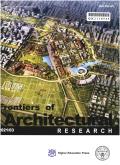人群对急诊可见性的影响:基于智能体的仿真与空间句法分析的集成
IF 3.6
1区 艺术学
0 ARCHITECTURE
引用次数: 0
摘要
急诊科(ed)是最繁忙的医院单位之一,可见性对于监控、协作和寻路至关重要。在中国,急诊科患者人数过多导致走廊拥挤,严重影响了能见度。然而,目前的能见度评估方法主要关注墙体、立柱等静态障碍物,忽略了人群障碍物,低估了视觉障碍。为了弥补这一研究空白,本研究提出了一种基于智能体仿真和空间句法分析相结合的可视化评估方法。基于医院急诊室的高峰时段行为数据,模拟了六个不同走廊布局的急诊室的人群运动。然后将模拟的人群位置作为视觉障碍物,运用空间句法理论对不同时间步长人群障碍物下的能见度进行评价。研究结果表明:1)环形廊道布局减少了患者回溯和廊道拥堵;2)环形走廊布局有利于医务人员在考虑人群遮挡的情况下更好地对整体空间进行自然监控;3)环形走廊布局使医护人员更容易看到彼此,支持团队协作,不受人群阻碍;4)简单布局在寻路方面表现最好,不受人群阻碍。本研究首次对人群障碍物下ED的能见度进行了全面定量评估,并在其他拥挤的公共空间中具有潜在的应用前景。本文章由计算机程序翻译,如有差异,请以英文原文为准。
The impact of crowds on visibility in emergency department: Integrating agent-based simulation and space syntax analysis
Emergency departments (EDs) are among the busiest hospital units, where visibility is crucial for surveillance, collaboration, and wayfinding. In China, high ED patient volumes lead to crowded corridors, significantly impacting visibility. However, current visibility assessment methods focus on static obstructions such as walls and columns, neglecting crowd obstruction, and underestimating visual impediments.To address this research gap, this study proposes a novel visibility assessment method combining agent-based simulation and space syntax analysis. Based on peak-hour behavioral data from Hospital R's ED, crowd movement was simulated across six ED plans with different corridor layouts. The simulated crowd positions were then treated as visual obstacles, and space syntax theory was applied to evaluate visibility under crowd obstruction at various timesteps. The findings reveal that: 1) ring corridor layouts reduce patient backtracking and corridor congestion; 2) ring corridor layouts facilitate better natural surveillance of the overall space by medical staff with crowd obstruction considered; 3) ring corridor layouts enable medical staff to see each other more easily, supporting team collaboration, regardless of crowd obstruction; 4) simple layouts perform best in terms of wayfinding, irrespective of crowd obstruction. This study presents the first comprehensive quantitative assessment of ED visibility under crowd obstruction, with potential applications in other crowded public spaces.
求助全文
通过发布文献求助,成功后即可免费获取论文全文。
去求助
来源期刊

Frontiers of Architectural Research
ARCHITECTURE-
CiteScore
6.20
自引率
2.90%
发文量
430
审稿时长
30 weeks
期刊介绍:
Frontiers of Architectural Research is an international journal that publishes original research papers, review articles, and case studies to promote rapid communication and exchange among scholars, architects, and engineers. This journal introduces and reviews significant and pioneering achievements in the field of architecture research. Subject areas include the primary branches of architecture, such as architectural design and theory, architectural science and technology, urban planning, landscaping architecture, existing building renovation, and architectural heritage conservation. The journal encourages studies based on a rigorous scientific approach and state-of-the-art technology. All published papers reflect original research works and basic theories, models, computing, and design in architecture. High-quality papers addressing the social aspects of architecture are also welcome. This journal is strictly peer-reviewed and accepts only original manuscripts submitted in English.
 求助内容:
求助内容: 应助结果提醒方式:
应助结果提醒方式:


